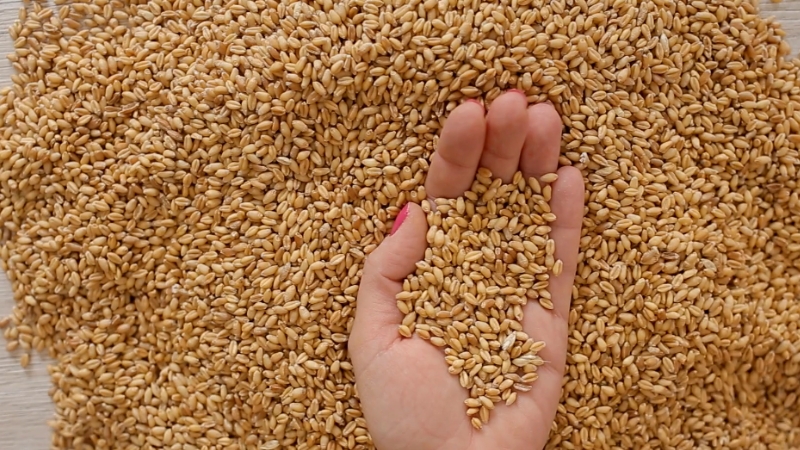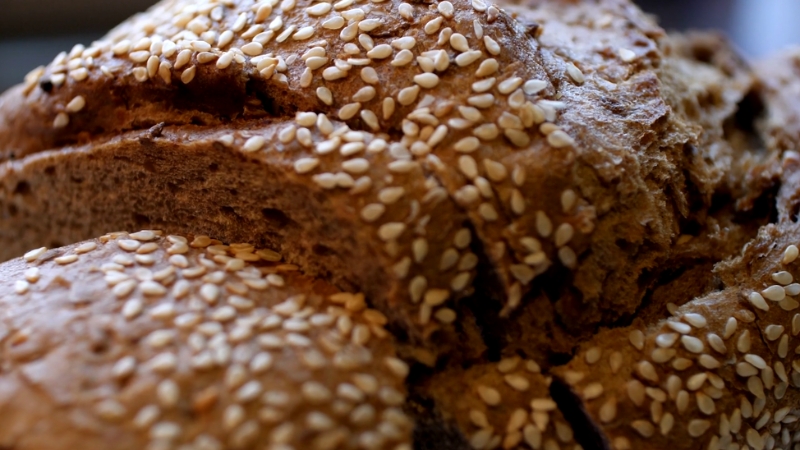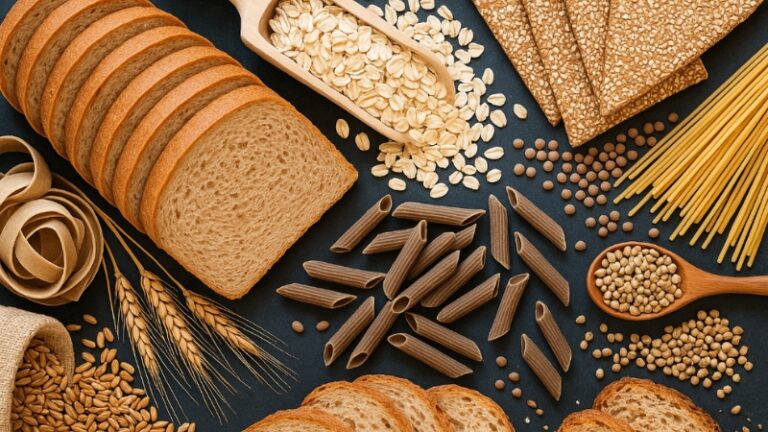One week, we’re told to eat something. The next, it’s villainized. From social media trends to magazine headlines and everything in between, food seems on a constant roller coaster of popularity.
One of the most misunderstood food categories? Carbohydrates.
More often than not, carbs get tossed into the “bad” pile by fad diets and influencers alike. And when that happens, bread, pasta, and grains tend to be the first to go.
But here’s the thing: not all carbs are the same. If you look into the details instead of lumping all carbs together, you’ll discover that some are not only good for you, but essential.
That’s where whole grain and whole wheat come in.
Let’s explore this often-misjudged food and find out why it’s one of the most powerful, affordable, and versatile ingredients you can have in your kitchen.
Overview
Before we talk about benefits, we need to understand what. Not all wheat-based products are the same, and knowing the difference can make a significant impact on your health.
The Anatomy of a Whole Grain

All grains, including wheat, are made up of three main parts:
- Bran – The outer layer that contains fiber, antioxidants, and B vitamins
- Germ – The core, packed with nutrients like vitamin E, healthy fats, and more B vitamins
- Endosperm – The largest portion, made mostly of starchy carbohydrates and some protein
Refined Grains vs. Whole Grains
View this post on Instagram
When grains are refined (like in white flour or white rice), the bran and germ are removed, leaving just the starchy endosperm. Unfortunately, this process also removes over half the grain’s nutrients, including most of the fiber and essential minerals.
Whole grain wheat keeps everything intact. That’s what gives it the edge over its refined counterparts.
Whole Wheat: A Nutritional Powerhouse

Whole grain whole wheat is more than just “bread that’s a little darker.”
Packed with Dietary Fiber
Fiber is one of the most underrated nutrients, yet it’s critical for maintaining good health. Whole wheat is a rich source of insoluble and soluble fiber, offering these benefits:
- Supports digestive health: Keeps things moving and helps prevent constipation
- Stabilizes blood sugar: Slows the absorption of sugar into the bloodstream
- Lowers cholesterol: Helps reduce LDL (bad) cholesterol levels
- Keeps you full longer: Reduces hunger and prevents overeating
For busy families and individuals trying to manage weight, this makes whole wheat a filling and practical choice.
A Wide Range of Essential Vitamins & Minerals
Whole wheat offers more than fiber. It’s packed with vital nutrients, including:
- Iron – Helps carry oxygen in the blood
- Zinc – Supports the immune system
- Magnesium – Important for nerve, muscle, and heart function
- Thiamin (B1), Folate (B9), and Vitamin B6 – Vital for energy production and brain function
- Potassium – Balances fluids and helps lower blood pressure
Many of these nutrients are stripped out of refined grains. So by choosing whole wheat, you’re choosing real nourishment.
Long-Term Health Benefits
Packed w/ essential nutrients & dietary fiber, whole grains contribute to improved blood sugar control and reduced risk factors for cardiometabolic diseases. Certified diabetes educator & RD Angela Ginn-Meadow shares 5 heart-friendly benefits below. https://t.co/xGafrKXb33
— Grain Foods Foundation (@GrainFoods) March 1, 2024
Eating whole wheat regularly doesn’t just help with day-to-day health—it can also be a long-term investment in your future.
Reduces Risk of Chronic Diseases
- Type 2 Diabetes: Whole wheat has a low glycemic index, which helps regulate blood sugar levels and reduces the risk of insulin resistance.
- Heart Disease: The fiber, antioxidants, and healthy fats in whole grains contribute to better heart health.
- Obesity: Whole grains support a healthy metabolism and can help with weight maintenance or loss.
- Cancer: Some studies suggest that a high intake of fiber from whole grains can reduce the risk of colorectal and other types of cancer.
When something as simple as switching to whole grain wheat can lower your risk for several diseases, it becomes clear that this is a powerful food ally.
The Practical Side: Why Families Love Whole Wheat
From a practical standpoint, wheat makes sense, especially for families.
Budget-Friendly and Accessible
Whole wheat bread, pasta, flour, and cereals are widely available and often just as affordable (if not more) than trendier health foods. For parents feeding multiple mouths, this can be a lifesaver.
Easy to Cook and Bake With
Wheat is a kitchen staple. It works in sweet and savory dishes, in baking or cooking, for breakfast, lunch, dinner, or snack time.
In my own kitchen, I’ve made simple swaps to include more whole wheat:
My girls love their wheat-based foods, and I feel confident giving them to them because I know they’re getting both comfort and nutrition.
Making Healthy Swaps Without Sacrificing Taste

Everyday Whole Wheat Swaps
Whole wheat offers a nuttier, fuller flavor and a slightly denser texture that many people find even more satisfying than refined grains. As someone who loves to cook, I use whole wheat in many of my recipes. It’s a star ingredient in family favorites like: There’s no shortage of ways to include it in your cooking. From pancakes and cookies to stews and casseroles—wheat fits in everywhere. Somewhere along the way, wheat got a bad reputation. But when you strip away the misinformation and look at the facts, you’ll find a simple truth: It’s nutritious, affordable, accessible, and family-friendly. It supports gut health, energy, heart function, and disease prevention. It’s been part of our food culture for centuries—and for good reason. Wheat secrets, like its high fiber content and essential vitamins, make it an essential part of a healthy diet. So the next time someone tells you to ditch carbs, remember: It’s not about eliminating them. It’s about choosing the right kind. Whole wheat isn’t a guilty pleasure—it’s a smart, delicious, everyday choice.
Instead of…
Try…
White bread
100% whole wheat bread
White pasta
Whole wheat or whole grain pasta
White flour
Whole wheat flour (or mix it 50/50)
Sugary cereal
Whole-grain oats or shredded wheat
White rice
Brown rice, farro, quinoa, bulgur
My Kitchen Tip
Final Thoughts

